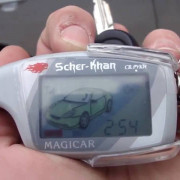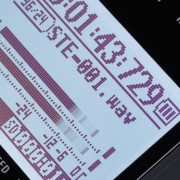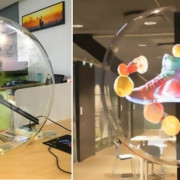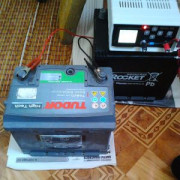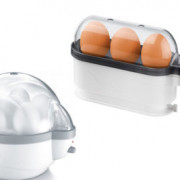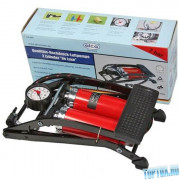Даташит bat54s pdf ( datasheet )
Текстовая версия документа
BAT54 /A /C /S SURFACE MOUNT SCHOTTKY BARRIER DIODE Product Summary(@TA = +25°C) Features and Benefits VLow Turn-on VoltageRRM (V) IO (mA) VFmax (V) IRmax (μA)Fast Switching 30 200 0.8 2 PN Junction Guard Ring for Transient and ESD ProtectionTotally Lead-Free & Fully RoHS Compliant (Notes 1 & 2) Halogen and Antimony Free. “Green” Device (Note 3) Qualified to AEC-Q101 Standards for High Reliability An Automotive-Compliant Part is Available Under Separate Datasheet (BAT54Q_AQ_CQ_SQ) Description Mechanical Data200mA surface mount Schottky Barrier Diode in SOT23 package, Case: SOT23 offers low turn-on voltage and fast switching capability, designed with Case Material: Molded Plastic, “Green” Molding Compound. PN Junction Guard Ring for Transient and ESD Protection, totally UL Flammability Classification Rating 94V-0 lead-free finish and RoHS compliant, ”Green” device. Moisture Sensitivity: Level 1 per J-STD-020 Terminals: Matte Tin Finish Annealed over Alloy 42 Leadframe (Lead Free Plating). Solderable per MIL-STD-202, Method 208 Polarity: See Diagrams Below Weight: 0.008 grams (Approximate) Top View BAT54 BAT54A BAT54C BAT54SOrdering Information(Note 4)Part Number Compliance Case PackagingBAT54-7-F Standard SOT23 3000/Tape & Reel BAT54A-7-F Standard SOT23 3000/Tape & Reel BAT54C-7-F Standard SOT23 3000/Tape & Reel BAT54S-7-F Standard SOT23 3000/Tape & Reel BAT54-13-F Standard SOT23 10,000/Tape & Reel BAT54A-13-F Standard SOT23 10,000/Tape & Reel Notes: 1. No purposely added lead. Fully EU Directive 2002/95/EC (RoHS) & 2011/65/EU (RoHS 2) compliant. 2. See http://www.diodes.com/quality/lead_free.html for more information about Diodes Incorporated’s definitions of Halogen- and Antimony-free, «Green» and Lead-free. 3. Halogen- and Antimony-free «Green” products are defined as those which contain <900ppm bromine, <900ppm chlorine (<1500ppm total Br + Cl) and <1000ppm antimony compounds. 4. For packaging details, go to our website at http://www.diodes.com/products/packages.html.Marking Informationxxx = Product Type Marking Code KL1 = BAT54 KL2 = BAT54A KL3 = BAT54C KL4 = BAT54S YM = Date Code Marking for SAT (Shanghai Assembly/ Test site) YM = Date Code Marking for CAT (Chengdu Assembly/ Test site) Y or Y = Year (ex: D = 2016)Shanghai A/T Site Chengdu A/T SiteM = Month (ex: 9 = September)Date Code Key Year 2010 2011 2012 2013 2014 2015 2016 2017 2018 2019 2020 2021 2022 2023 CodeX Y Z A B C D E F G H I J KMonth Jan Feb Mar Apr May Jun Jul Aug Sep Oct Nov Dec Code1 2 3 4 5 6 7 8 9 O N D BAT54 /A /C /S 1 of 5 November 2016 Document number: DS11005 Rev. 32 — 2www.diodes.com Diodes Incorporated
BAT54S Datasheet Download — STMicroelectronics
| Номер произв | BAT54S | |||
| Описание | SMALL SIGNAL SCHOTTKY DIODE | |||
| Производители | STMicroelectronics | |||
| логотип | ||||
1Page
BAT54, A, C, S SMALL SIGNAL SCHOTTKY DIODE A1 K A2 K1 A K2 K2 A1 K1 K2 A2 K1 BAT54S ABSOLUTE RATINGS (limiting values) Symbol VRRM Repetitive peak reverse voltage IF Continuous forward current IFSM Surge non repetitive forward current tp=10ms sinusoidal Ptot Power dissipation (note 1) Tamb = 25°C Tstg Maximum storage temperature range Tj Maximum operating junction temperature * TL Maximum temperature for soldering during 10s Note 1: for double diodes, Ptot is the total dissipation of both diodes. Value dPtot Rth(j−a) thermal °C °C °C June 1999 — Ed: 3A
BAT54, A, C, S Rth (j-a) Junction to ambient (*) (*) Mounted on epoxy board with recommended pad layout. °C/W STATIC ELECTRICAL CHARACTERISTICS (per diode) Symbol VF * Forward voltage drop IR ** Reverse leakage current Pulse test : * tp = 380 µs, δ < 2% ** tp = 5 ms, δ < 2% Tests conditions Tj = 25°C IF = 0.1 mA IF = 1 mA IF = 10 mA IF = 30 mA IF = 100 mA Tj = 25°C VR = 30 V Tj = 100°C Min. µA DYNAMIC CHARACTERISTICS (Tj = 25 °C) Symbol Parameters trr Reverse recovery time Tj = 25°C VR = 1 V F = 1 MHz IF = 10 mA IR = 10 mA Tj = 25°C Irr = 1 mA RL = 100 Ω Min. Fig.1 : Average forward power dissipation versus average forward current. δ = 0.1 δ = 0.2 δ = 0.5 δ=tp/T 0.25 Fig.2 : Average forward current versus ambient temperature ( δ = 1). IF(av)(A) δ=tp/T tp
Fig.3 : Non repetitive surge peak forward current versus overload duration (maximum values). Fig.4 : Relative variation of thermal impedance junction to ambient versus pulse duration (alumine 0.3 IM 0.2 δ=0.5 1E-2 δ = 0.5 δ = 0.2 0.10 δ = 0.1 0.01 δ=tp/T 1E+1 Fig.5 : Reverse leakage current versus reverse voltage applied (typical values). Tj=50°C Fig.6 : Reverse leakage current versus junction temperature. Tj(°C) Fig.7 : Junction capacitance versus reverse voltage applied (typical values). Fig.8 : Forward voltage drop versus forward current (typical values). |
||||
| Всего страниц | 5 Pages | |||
| Скачать PDF |



